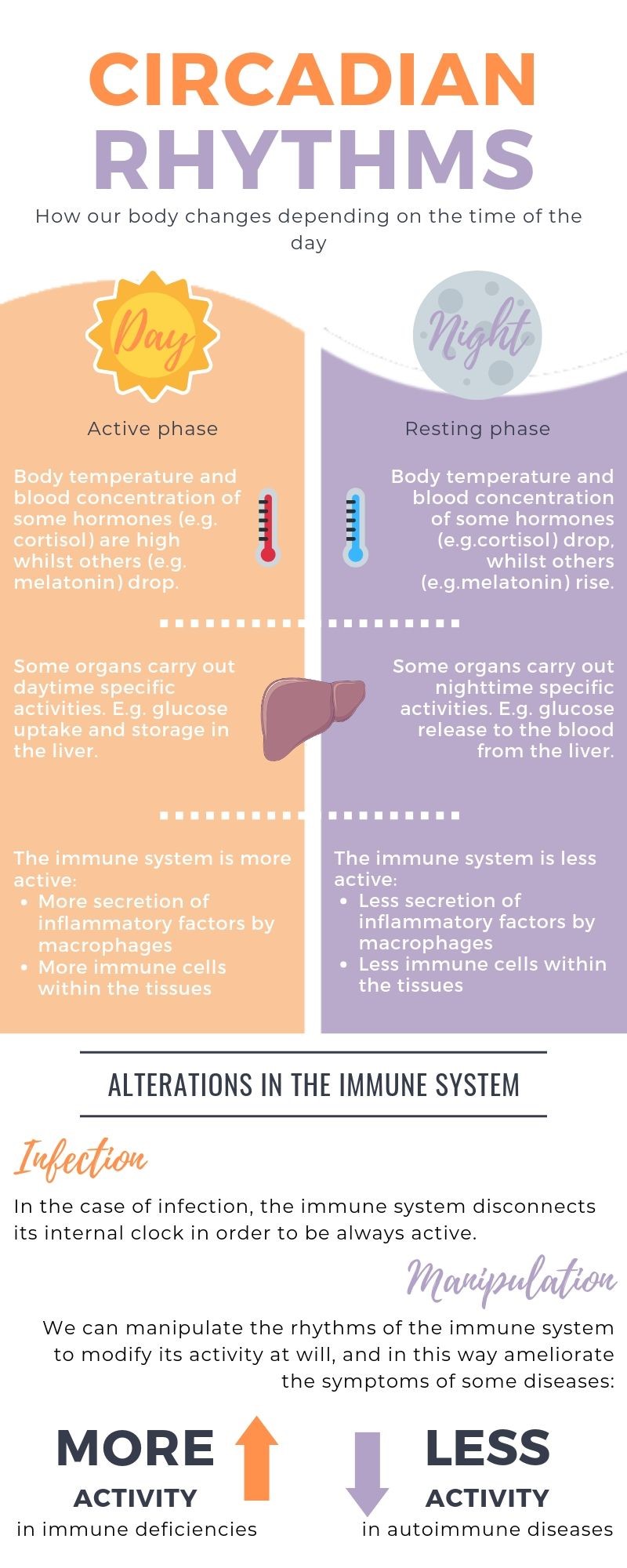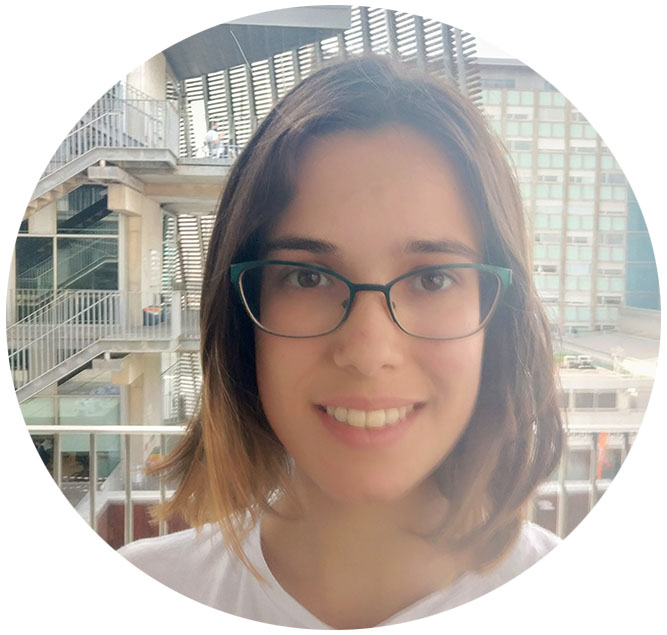Have you ever wondered why we mostly sleep during the night and not for example at random moments along the day? This is because humans, as well as many other organisms, have circadian rhythms. Circadian rhythms are cycles of activity and inactivity that we have evolved in order to adapt to cycles to our environment, with the day-night cycle being the most important one. Thus, besides having such cycles as the wake-sleep one, there are many other parameters in our body that oscillate in a rhythmic pattern, such as the body temperature and the blood level of certain hormones. For example, cortisol, renowned for being the ‘stress hormone’ has a peak in blood in the early morning in order to prepare us for the activity of the day. In contrast, the blood concentration of melatonin, the sleep hormone, is increased at dusk.
Not only us, as a complex organism, have circadian rhythms: inside us, our organs, tissues and cells have their own activity cycles, the momentum of which can be maintained even when they are separated from our body. Activity rhythms of each organ, tissue and cell of our body are partially coordinated thanks to the central nervous system, which perceives information of the hour of the day through the retina. This is how the activity of the liver, for example, is regulated. The liver is an organ with much differentiated functions depending on the hour of the day. During the day, when we usually eat food, the liver is in charge of glucose uptake for its storage in order to release it to the blood at night. In this way, the glucose in blood is maintained at levels that allow the functioning of our organism during our nocturnal little fasting.
Activity rhythms of each organ, tissue and cell of our body are partially coordinated thanks to the central nervous system, which perceives information of the hour of the day through the retina.
The immune system is the one that detects threats for our health, such as infections, in order to coordinate a response against them to try to remove them. Among the many cells comprised within the immune system, macrophages are one of our first defense lines, since they are the first ones in detecting such threats. Upon detection, macrophages call the alarm for the rest of the immune system and coordinate the most adequate response through the secretion of inflammatory factors. For these reasons, macrophages are known as our ‘sentinels’, and they also have their own activity cycles. In this way, macrophages are programmed to be more active during the day, since it is when we are awake and have higher chances of catching an infection. Besides increasing in number in tissues, they are more likely to secrete more inflammatory factors upon detection of a threat. As a consequence, the generated immune response is higher during the daytime than at night. Then, at night, since we are mostly sleeping and thus have less risk of infection, macrophages reduce their activity levels.
Tricking the rhythmic system
However, it does not really make sense that the activity of our immune system keeps oscillating once an infection has been already stablished. Therefore, our macrophages have developed mechanisms for ‘waking up’, and being permanently active to fight the infection regardless of the hour of the day.
This mechanism, which is activated in response to both microbial agents and inflammatory factors, disconnects the molecular clock machinery that usually restrains the activity of macrophages, allowing for a more robust immune response.
Studying this natural ‘waking up’ mechanism would allow us to manipulate the activity of our macrophages at will:
- in the case of autoimmune diseases such as lupus, which are characterized by an excessive activity of the immune system, we could learn how to send them back to sleep to ameliorate the effects of the disease.
- in immune deficiencies such as AIDS, caused by a lack of immune activation, we could learn how to wake macrophages up and therefore improve the lives of the affected people.
For all these reasons the study of how our circadian rhythms work and how to manipulate them is so important.








